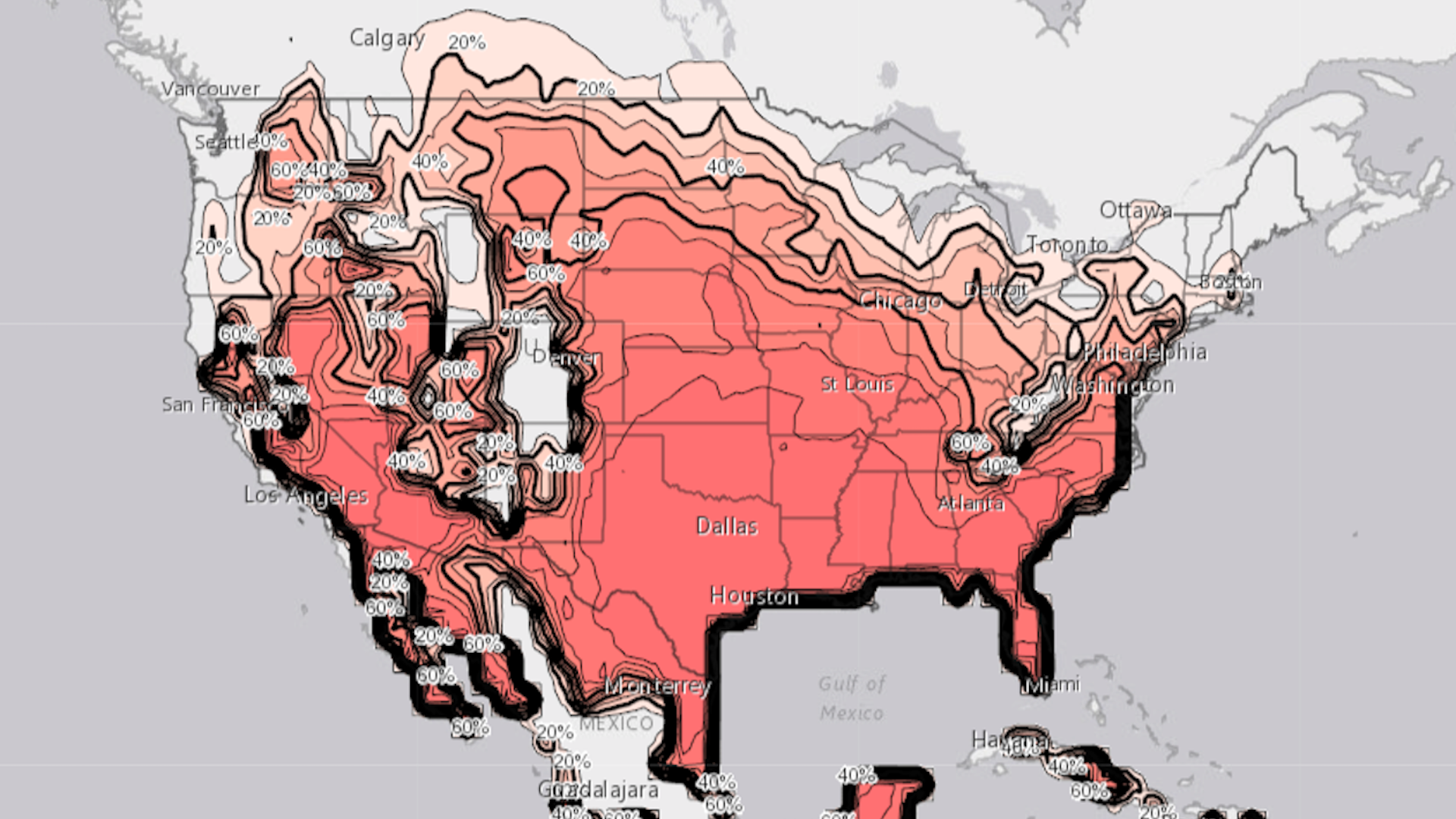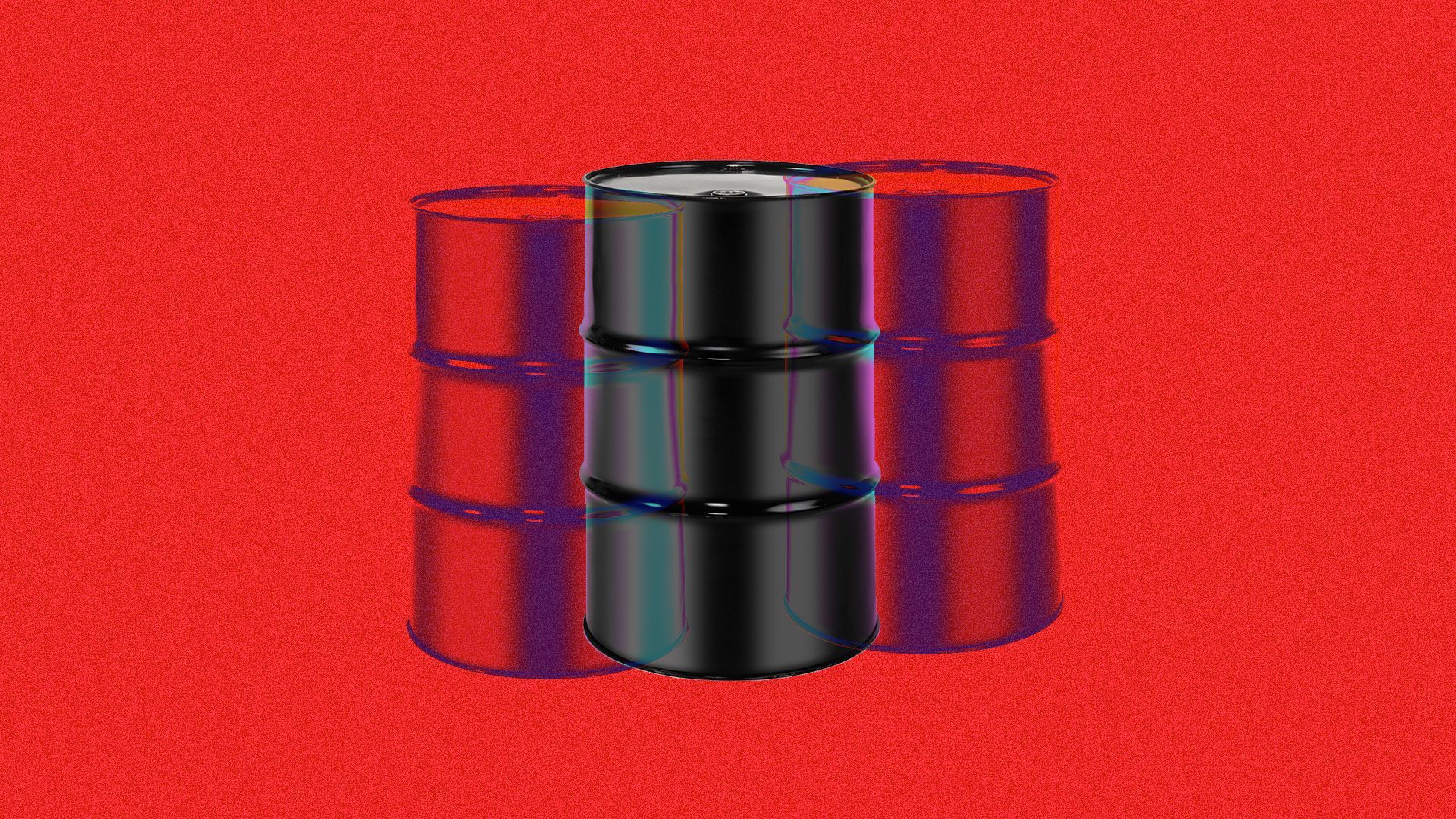| |
| |
| |
| Presented By Air Products |
| |
| Axios Generate |
| By Ben Geman and Andrew Freedman · Jul 27, 2022 |
| 👋 Good morning, everybody. Today's newsletter, edited by Mickey Meece, has a Smart Brevity count of 1,252 words, 5 minutes. 📬 Did a friend send you this newsletter? Welcome, please sign up. 🎶 With h/t to Albumism, 30 years ago this week hip hop legends EPMD released "Business Never Personal," which provides today's intro tune... |
| |
| |
| 1 big thing: A field guide to cascading threats |
 |
|
| Illustration: Aïda Amer/Axios |
| |
| The International Monetary Fund's new global economic outlook is a harrowing tour of big, overlapping energy and climate risks, Ben writes. Driving the news: The IMF sees global economic growth slowing way down in 2022-2023, and warns the world may soon teeter on the edge of recession. Why it matters: It's a window into how the energy shock from Russia's invasion of Ukraine and inflation fueled by higher energy prices are wounding economies — and especially the most vulnerable people. Zoom in: A few takeaways from yesterday's report... 1. Energy prices have been among the major drivers of wider inflation, alongside higher food prices, which are also driven up partly by high energy input costs. 2. IMF is urging countries not to lose climate focus. The report warns that curbing emissions demands "urgent" multilateral action and that: "The war in Ukraine and soaring energy prices have put pressure on governments to turn to fossil fuels such as coal as a stopgap measure." "Policymakers and regulators should make sure that any such measures are temporary and cover only energy shortfalls—and do not increase emissions overall," they write in part. 3. Russia's energy weapon looms large. IMF's analysis includes a "plausible" scenario in which global growth slows even more than their baseline forecast — and a worsening energy crisis would be a key reason why. - "A complete cessation of exports of Russian gas to European economies in 2022 would significantly increase inflation worldwide through higher energy prices."
- "In Europe, it could force energy rationing, affecting major industrial sectors, and sharply reduce growth in the euro area in 2022 and 2023, with negative cross-border spillovers."
4. Global "fragmentation" could hurt climate efforts. One downside risk is the war contributing to a splintering of the global economy. - They warn of the potential for splintering into geopolitical blocs with different tech standards, cross-border payment systems, reserve currencies and more.
- "Fragmentation may also diminish the effectiveness of multilateral cooperation to address climate change, with the further risk that the current food crisis could become the norm," it states.
5. Energy and food price spikes are a conflict risk. They note the link between prices and "social stability" means that "further barriers to trade, or a poor harvest due to extreme heat and fertilizer shortages, risk causing further hardship, famine, or unrest." |
    |
| |
| |
| 2. Making sense of the hot new federal website |
 |
|
| Screenshot of heat.gov showing the predicted likelihood of temperatures of 90°F or above on Aug. 9, 2022. |
| |
| The Biden administration unveiled a new online portal for heat-related weather forecasting, as well as health and safety information yesterday, Andrew writes. The website rolled out just as the Pacific Northwest is grappling with an extended period of extreme heat. Why it matters: The website, heat.gov, brings existing products from NOAA, which is part of the Commerce Department, together with new and existing risk guidance from throughout the federal government for the first time. Zoom in: Using the website, members of the public and policymakers can better anticipate extreme heat well in advance. - In addition, the portal contains new tools that identify areas at particular risk of extreme heat events due to their social vulnerability.
- Extreme heat kills more than 700 Americans per year and is typically the biggest weather-related killer each year.
Context: The rollout comes during a summer that has featured relentless heat waves across the country. What they're saying: "Extreme heat is a global health threat, and due to human-caused climate change, it's getting worse," said NOAA administrator Rick Spinrad, in a statement. |
    |
| |
| |
| Bonus: Texas' sizzling temperature record |
 Data: NOAA; Chart: Nicki Camberg/Axios Texas set a record for its hottest April through June period, with several exceptional heat waves affecting the state, according to NOAA data, Andrew writes. What's next: July has been unusually hot and dry in Texas as well, with the state mired in a severe drought. The dryness of the soils only worsens the heat. Data for July to be released early next month may extend the heat streak. |
    |
| |
| |
| A message from Air Products |
| Raising the bar for hydrogen and industrial gas sustainability |
| |
 |
| |
| We're setting the example. We're converting our fleet of around 2,000 trucks to hydrogen fuel cell zero-emission vehicles. This is just one step we're taking toward achieving both Air Products' and society's net-zero commitment. Real plans and real projects. Find out more. |
| |
| |
| 3. Carbon tracking firm warns on Chinese coal use |
 |
|
| Illustration: Shoshana Gordon/Axios |
| |
| An emissions tracking company using satellites has spotted a surge in Chinese carbon dioxide emissions during July from the country's coal-fired power plants, Andrew writes. Driving the news: This is likely related to multiple heat waves this month, the French climate and energy analytics firm Kayrros said in a statement. Why it matters: China is the top global emitter of greenhouse gases, and coal is the most carbon-intensive way to generate power. Driving the news: The extreme heat in parts of China has made global headlines. - Temperatures in some areas have exceeded 104°F (40°C) in recent weeks, which has boosted the power demand for air conditioning.
- The heat waves affected provinces including the manufacturing region of Zhejiang. The firm's data showed emissions from coal-fired power there were higher than during the same month in the past three years.
Zoom in: China has been importing less European natural gas due to Russia's war in Ukraine, which has caused gas prices to skyrocket. Instead, power plants may be switching to coal, which is cheaper. The bottom line: The heat wave and coal relationship would only worsen climate change. - "The consequences are unsustainable," Kayrros co-founder Antoine Rostand said in a statement.
|
    |
| |
| |
| 4. Biden's evolving use of the U.S. crude reserve |
 |
|
| Illustration: Aïda Amer/Axios |
| |
| The Energy Department is floating plans to offer oil producers fixed prices for the future resale of crude back into the Strategic Petroleum Reserve, Ben writes. Why it matters: White House officials hope the proposed regulation will encourage more domestic output. "It provides oil producers more certainty and more incentive to produce in the near term if they know that they're going to get paid at a fixed price at a future date," National Economic Council director Brian Deese told reporters yesterday. Catch up fast: The plan for future restocking of the reserve comes as oil is flowing the other way from the SPR. The Energy Department issued a notice yesterday to sell up to 20 million more barrels from the stockpile. It's part of the wider release of 180 million barrels announced in March. Go deeper: US to offer fixed price contracts to refill SPR (Argus Media) |
    |
| |
| |
| 5. Inside a big new farm for climate-friendly bacon |
 |
|
| Illustration: Sarah Grillo/Axios |
| |
| Alt-meat startup MyForest Foods has unveiled what it calls the world's largest aerial mycelium farm, a high-tech facility for boosting production of its mushroom-based imitation bacon, Axios' Alex Fitzpatrick reports. Why it matters: Animal farming is a major greenhouse gas emitter, and wide-scale adoption of alternative meats could help curb climate change — assuming they're produced cleanly. MyForest Foods' bacon knock-off is one of many products making it easier for meat lovers to give up the real thing. Zoom in: The Swersey Silos farm is located in Green Island, N.Y., a short drive up the Hudson River from Albany. - It's expected to annually produce nearly 3 million pounds of mycelium — the root-like fungal structure from which mushrooms grow — for making the company's MyBacon pork alternative. A company rep said that would be enough for about 1 million pounds of MyBacon per year.
- Axios got to tour the 78,000 square-foot vertical farming facility, where mycelium will be grown in substrate on racks reaching 16 feet tall.
- With seven rooms, it'll have 1.75 acres of growing space — about the same as a smallish conventional mushroom farm. Each batch is grown for 12 days and harvested in a single day.
Keep reading for Alex's taste test and more. |
    |
| |
| |
| 6. 🏃🏾♀️Catch up fast on policy: climate and nukes |
| 🌏 "Australia's government introduced legislation to enshrine steeper targets to cut greenhouse-gas emissions into law, even as Greens politicians signaled more ambitious goals are needed to win their support." (Bloomberg) ⚛️ "Germany is rethinking its plan to exit nuclear power by the end of the year, as concern increases that Russia's moves to cut gas supplies could trigger a winter electricity crunch in Europe's largest economy." (Financial Times) |
    |
| |
| |
| A message from Air Products |
| Our new goal is to reduce Scope 3 CO2 emissions intensity by 33% |
| |
 |
| |
| Air Products plans to reduce the intensity of our Scope 3 CO2 emissions by one-third by 2030. This is just one part of our new sustainability commitments. What this means: We're addressing climate impacts across our value chain. See how we help deliver climate benefits. |
| |
| 🙏Thanks for reading and see you back here tomorrow. |
 | | Why stop here? Let's go Pro. | | |











No comments:
Post a Comment